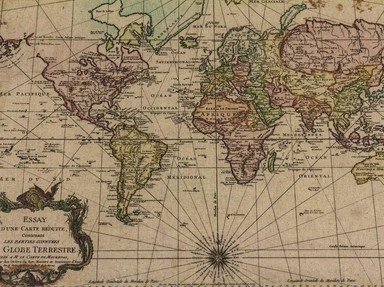Quiz Answer Key and Fun Facts
1. Existing from 411-1833 in the northwest Iberian Peninsula, this kingdom was continually conquered. The founding Suebic kingdom was beaten by the Visigoths, who collapsed in favor of invading Moors, who in turn were beaten by Asturians shortly thereafter, and later was part of Portugal, León, Castile, and finally Spain itself. What Spanish region is this, given semi-autonomous status in 1981?
2. Though it existed in some form before then, this state reached its zenith after the Portuguese began taking the outskirts of Sri Lanka (then Ceylon) in the late 1500s. Centered around the hidden city of Senkadagalapura, it held out against European invaders until the British finally annexed it in 1815. What delicious name did this state have?
3. Founded circa 600 CE in the modern Netherlands, this kingdom constantly battled the Franks in the south. It was wiped from the maps when the Franks finally defeated it at the Battle of the Boarn in 734. What state was this, whose people led several uprisings, the largest of which were crushed by Charlemagne?
4. This German state came into existence in 1123 after the Holy Roman Emperor Lothair III granted Lord Bernhard I a relatively small piece of land virtually surrounded by Westfalen and Hannover. In 1613 it split into three lines, Brake, Alverdissen, and Detmold, and later on the Biesterfeld line emerged. What small country was this, which ended in 1918 and became a "Free State" within Germany?
5. The first of the four Islamic caliphs, this caliphate only existed for 29 years - from Muhammad's death in 632 until 661 when political infighting led to the creation of the Umayyad Caliphate. What Islamic power was this, which held land from modern Pakistan to the Atlantic Ocean, and was the largest empire in history to that point, surpassing Rome's size by nearly 40%?
6. A classic rags-to-riches story, this Russian state began as nothing more than a small trading post in 1283 that was pillaged by the Mongols in 1293. By the time it officially ended in 1547, its leader Ivan the Great conquered the majority of the surrounding areas when he crowned himself Tsar of Russia. What predecessor to modern Russia was this?
7. Founded weeks prior to the fall of Constantinople in 1204 which set up the Latin Empire, this empire just to the east was actually the longest-lasting successor to the Byzantine Empire. It was constantly at war, but the Silk Road allowed the capital to remain prosperous for years. What state was this, which fell to the Ottoman Turks just eight years after Constantinople suffered the same fate?
8. In 1678, the Oirat tribes united for the last time and enjoyed a brief period of period of power before China, Manchu, and other Mongols destroyed the union by 1756. In the meantime, they had conquered lands from Xinjiang to modern Kazakhstan and north into Siberia. What khanate had the tribes created?
9. Established in 1101, this German principality was split in half 59 years later when the County of Mark separated from it. In 1348, it absorbed the County of Jülich, and then in 1509 it also merged with the County of Ravensberg. In 1521 it formed a duchy with Jülich and Cleves, and following the Thirty Years' War, it was ceded to Neuburg. What state was this, which officially ended in 1666?
10. At the height of this West African kingdom, it owned lands stretching across modern Guinea, with its capital at the central location of Timbo, and also a small tract east of Conakry close to the Sierra Leone border. In 1896, 171 years of existence were stopped when the French defeated their forces at Poredaka. What Islamic kingdom was this?
Source: Author
illiniman14
This quiz was reviewed by FunTrivia editor
gtho4 before going online.
Any errors found in FunTrivia content are routinely corrected through our feedback system.

